Description
Children will use an 8-bit binary coding system and different beads to create bracelets with their local airport code.
The activity worksheets can be used for passive programming.
Number of participants
For any number of participants, depending on the supplies available.
Space considerations
An indoor space is best, with tables and chairs for participants.
Competencies
- Computer coding
- Observation and recording
- Critical thinking
- Fine motor skills
Materials
- Crayons, markers or coloured pencils
- Binary code worksheet for each participant
- Binary alphabet chart
- Canadian airport code chart
- Beads (at least two different colours or shapes)
- Pipe cleaners or string/twine to thread beads onto
Preparation
- Prepare tables and chairs for participants with enough space to move around in between
- On the tables, place small bowls of beads divided by bead style (e.g., all green beads together or all star-shaped beads together)
- Place crayons/markers/coloured pencils throughout for planning
- Have a Binary Code Worksheet for each participant. The Alphabet Binary Chart and Airport Code Chart can be printed for each participant or shared in small groups.
Implementation
- Begin with an overview of what a binary system is, using the Binary Code Worksheet’s introduction.
- You can use the Binary Alphabet Chart to help code any word into binary. The more letters a word contains, the more sets of 8 beads will be required. To avoid having too many beads on a bracelet, for this activity we will use two different coloured beads to spell out a three-letter airport code in 8-bit binary.
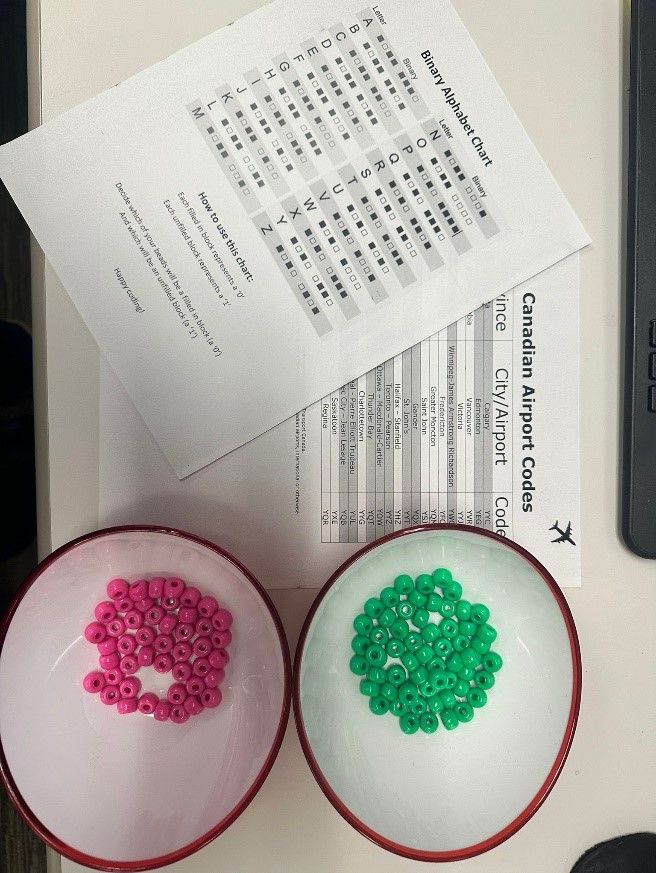
- Using the Airport Code Chart, choose a three-letter airport code and decide which style or colour of bead will be the “0” and which will be the “1”. Write out your chosen airport code on your sheet.
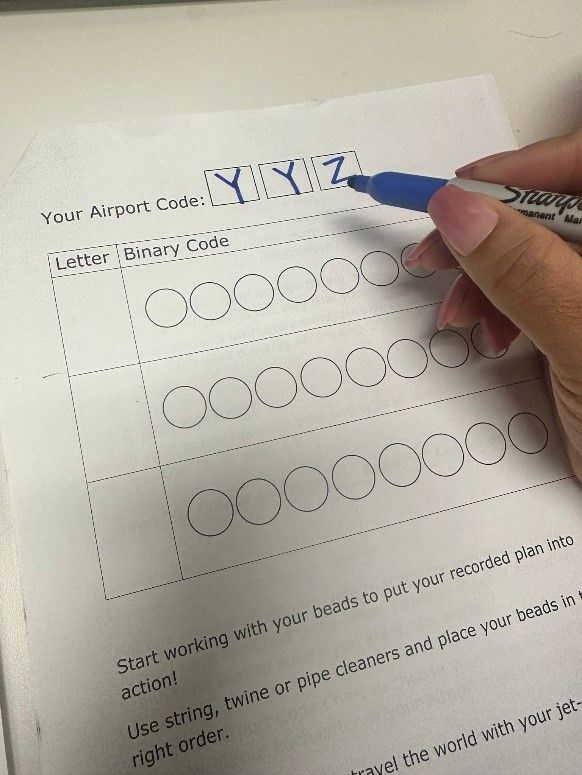
- Refer to the Binary Alphabet Chart to find the codes for your letters.
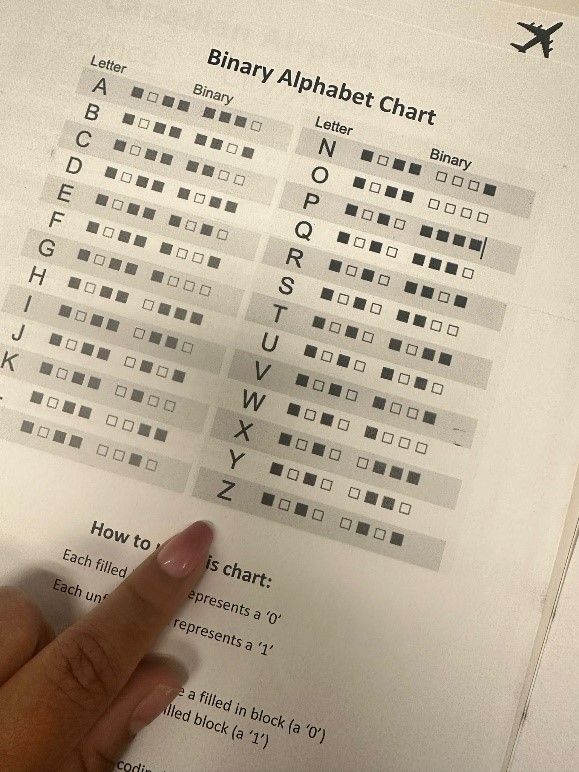
- Using the Binary Code Worksheet, start to plan out your bracelet using coloured markers to plot the bead arrangement.
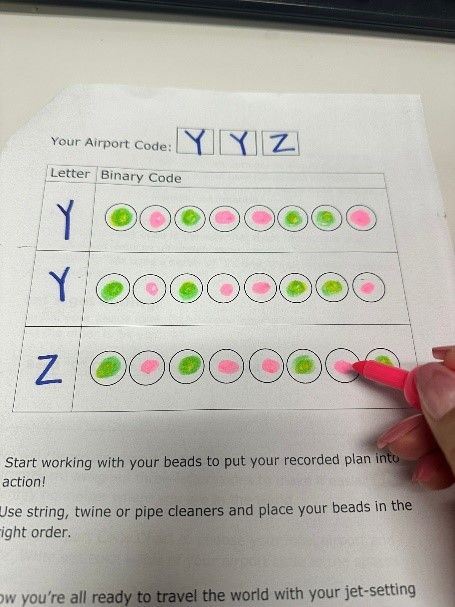
- Optionally, this step can be skipped and beads placed directly on the sheet in the correct arrangement.

- Make sure you are threading them in the right direction.
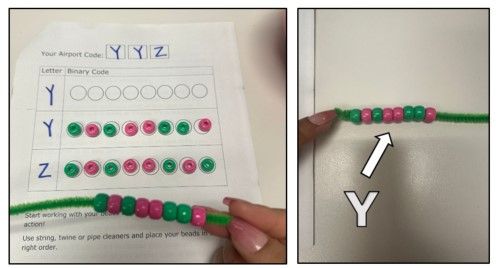
- When all beads are threaded, twist the pipe cleaner ends together or tie your string/twine. Enjoy your finished product, jet-setter!
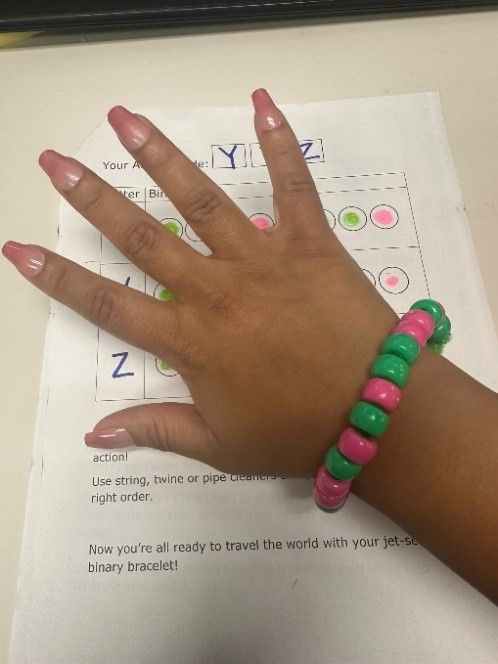
Accessibility considerations
- Consider alternate styles of beads. For example, instead of having two varying colours, the actual shape of the bead can differ: e.g., a round pony bead and a heart- or star-shaped bead.
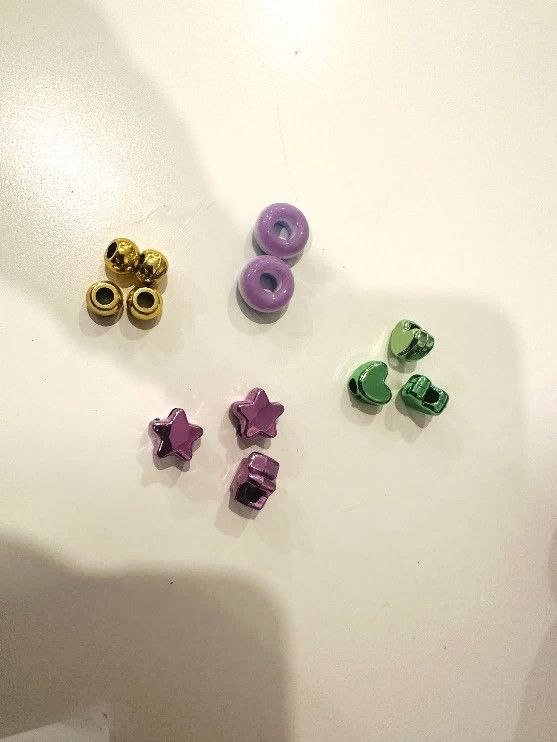
- Similarly, beads can vary in size: a smaller bead and a larger bead. Any set of two distinct items will work.
- Have participants work in pairs or small groups.
To extend this activity:
- Encourage participants to research other airport codes from around the world and include it in their bracelets.
- Include all kinds of words (and phrases) by using crayons or markers to colour code on an extra sheet of paper. Encourage participants to challenge each other by sending messages in code!
Book suggestions
- I Can Do That! 1000 Ways to Become Independent by DK Publishing
- What’s in a Bead? by Kelsey Borgford and Tessa Pizzale
- Métis Like Me by Tasha Hilderman and Risa Hugo